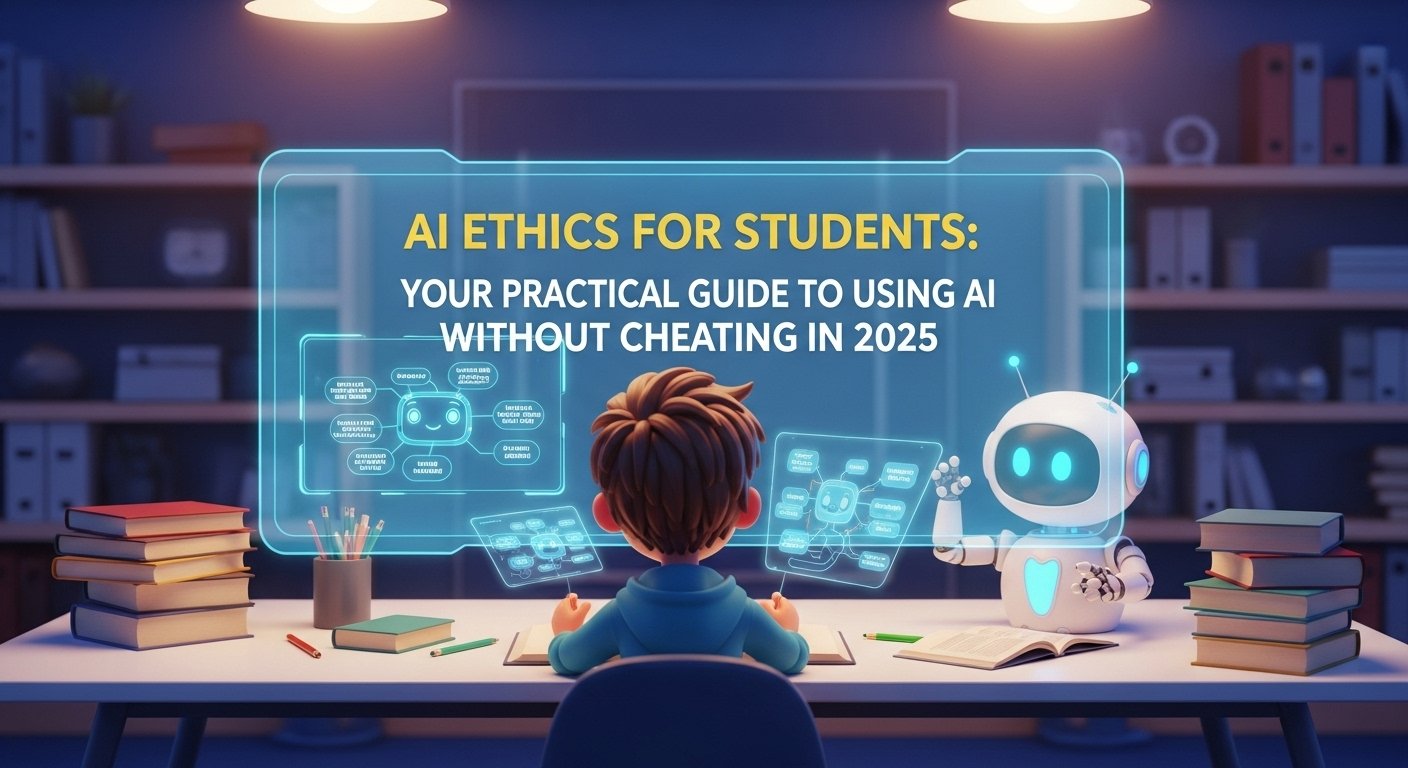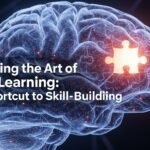Hello there! Professor Sobdar Ali (Oliver) here. As an educator and a tech enthusiast at PaidScripts.com, I’ve spent countless hours exploring how we can use technology to learn smarter. And let me tell you, the rise of Artificial Intelligence is the biggest shift I’ve seen in my entire career. It’s incredibly exciting.
But with great power comes… well, a lot of confusion.
I see it every day. Students are staring at a blinking cursor on a blank screen at midnight, knowing that a tool like ChatGPT or Gemini could whip up an essay in seconds. The temptation is real. You might be asking yourself: “What am I allowed to do? Where is the line between a helpful tool and academic cheating?” If that sounds familiar, you’re in the right place. The rules are new and often unclear.
Let me break it down for you. This isn’t about scaring you away from AI. It’s about teaching you how to dance with it. This guide is your practical, no-nonsense manual for navigating the world of AI ethics for students in 2025, so you can use these incredible tools to boost your learning, not risk your academic career.
First Things First: Why We Must Talk About AI Ethics for Students
Let’s get one thing straight: AI is not a passing fad. It’s a fundamental new layer of the digital world, much like the internet was two decades ago. Trying to ban it or ignore it is like trying to un-invent the calculator. It’s simply not going to happen.
The real conversation isn’t if students will use AI, but how they will use it. In my experience, the students who thrive are the ones who see AI not as a shortcut to avoid work, but as a co-pilot to do better work. Think about it: in the professional world, engineers, marketers, and researchers are already using AI to analyze data, draft reports, and brainstorm ideas. Learning to work alongside AI ethically is no longer just a school rule—it’s a critical career skill.
So, the key takeaway here is to shift your mindset. This isn’t about a list of “don’ts” designed to catch you out. This is a guide to a set of “do’s” that will make you a more effective, efficient, and future-proof student.
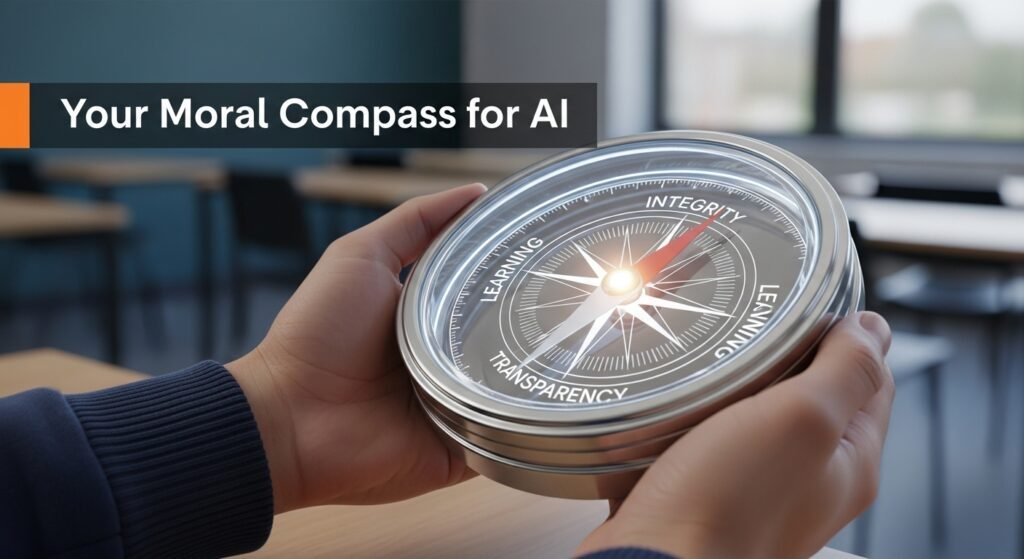
The “Ethical AI Framework”: My 3 Core Principles for Students
Over the years, I’ve found that complex rules are easily forgotten. Instead, I teach my students to rely on a few core principles. When you’re faced with a gray area, come back to these three ideas. They’ll be your compass.
Principle #1: You Are the Architect, AI is the Tool 🏛️
This is the most important concept to grasp. Imagine you’re an architect designing a skyscraper. You use incredibly sophisticated software (CAD) to create blueprints, run simulations, and render models. The software is a powerful tool. But who is the architect? You are.
You have the vision, you make the creative decisions, you apply the principles of engineering, and you are ultimately responsible for the final building. The software didn’t design the skyscraper; it helped you bring your design to life.
It’s the exact same with AI.
- Ethical Use: You use AI to brainstorm arguments for your history paper, create an outline, and check your grammar. You are the architect.
- Unethical Use: You ask AI to write the paper for you. You are no longer the architect; you’re just the delivery person.
The final work must always be a product of your unique thought process, your analysis, and your effort.
Principle #2: Disclose, Disclose, Disclose 🗣️
Let me tell you a quick story. I had two students working on a similar research project. Both used AI to help them summarize dense academic papers. Student A didn’t mention it, hoping I wouldn’t notice. Their work felt a bit generic, and when I asked a few follow-up questions, they struggled to explain their reasoning. It created a situation of distrust.
Student B, on the other hand, added a simple note at the end of their paper: “I used ChatGPT to help summarize three of my sources to speed up my initial research process. I then read the original papers to pull my own quotes and form my analysis.”
Who do you think had a better outcome? Student B, of course! Their transparency showed me they were thinking critically about how they were using the tool. It opened the door for a great conversation about effective research strategies. When in doubt, just be honest. A simple disclosure is your best friend.
Principle #3: Your Brain is the Final Editor 🧠
AI models are brilliant, but they are not infallible. They can, and frequently do, make things up. This phenomenon is often called “AI hallucination.” An AI can invent fake statistics, create quotes from non-existent experts, or cite sources that don’t exist. It does this with absolute confidence.
Here’s a practical tip: Treat every fact an AI gives you as unverified until you have confirmed it yourself from a primary or credible secondary source. You are the editor-in-chief of your own work. The final responsibility for every word and every claim rests on your shoulders. If you submit a paper with a fake statistic from an AI, “the AI told me” will not be a valid excuse. Trust, but always verify through your university library, Google Scholar, or other authoritative sources.
Microlearning Tips to Boost Skills Fast
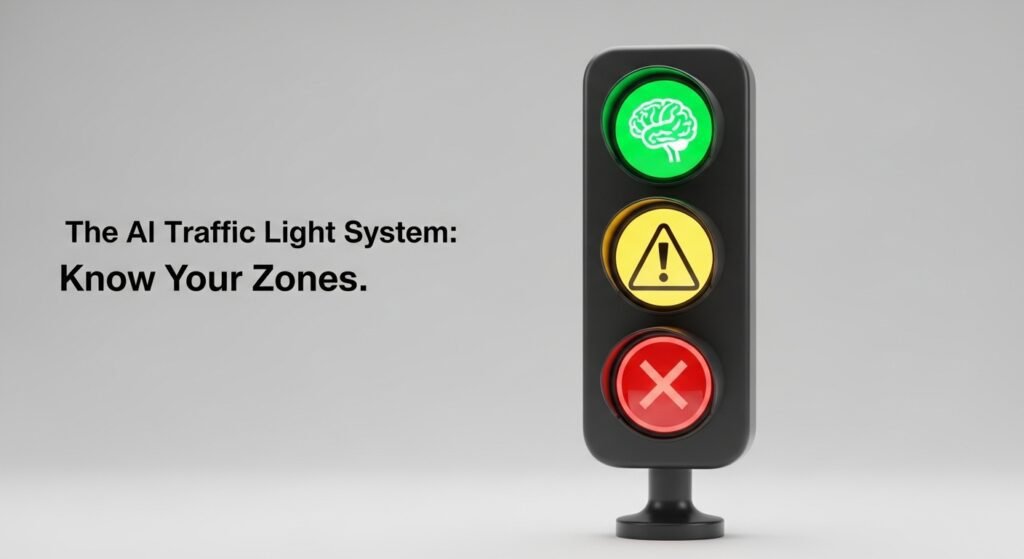
The Traffic Light System: A Practical Guide to AI in Your Schoolwork
Alright, let’s move from principles to practice. I’ve found the easiest way to think about specific tasks is a “Traffic Light System.” It breaks down what’s safe, what’s a gray area, and what’s a definite no-go.
[Suggestion: Insert a comparison table here with columns for Green, Yellow, and Red actions.]
✅ The Green Zone (Go for It!)
This is where AI shines as a true learning partner. These actions enhance your understanding and productivity without compromising your integrity.
- Brainstorming Partner: “Give me 10 potential essay topics on the impact of social media on modern politics.”
- Outline Creator: “Create a logical five-section outline for a research paper on renewable energy sources.”
- Concept Simplifier: “Explain the concept of ‘inflation’ to me as if I were a 15-year-old.”
- Study Buddy: “Based on my notes about World War II, generate 20 flashcards with key dates and events.”
- Grammar Guru: Using it to check your finished writing for grammar, spelling, and style improvements.
🟡 The Yellow Zone (Proceed with Caution)
This is the gray area. These actions aren’t automatically cheating, but they can easily cross the line if you’re not careful and critical.
- Paraphrasing: Asking AI to rephrase a sentence. Warning: The output still isn’t your own work. You must heavily edit it to reflect your own voice and sentence structure.
- Finding Sources: Asking AI for research papers on a topic. Warning: It might invent sources. You must find and read every single source yourself to verify its existence and relevance.
- Generating a “First Draft”: Using AI to produce a rough draft to overcome writer’s block. Warning: This is only ethical if you treat that AI draft as just another source and then proceed to write a completely new version in your own words.
🔴 The Red Zone (Full Stop – Academic Misconduct)
This is the danger zone. These actions are almost universally considered plagiarism or cheating. Plain and simple.
- Direct Copy-Pasting: Submitting any chunk of AI-generated text as your own without attribution.
- Completing Assignments: Asking the AI to write an entire essay, solve a problem set, or write a lab report from scratch.
- Taking Tests: Using AI to feed you answers during an online quiz or exam.
- Authoring Code: Asking the AI to write a program for a coding class that you cannot explain yourself.
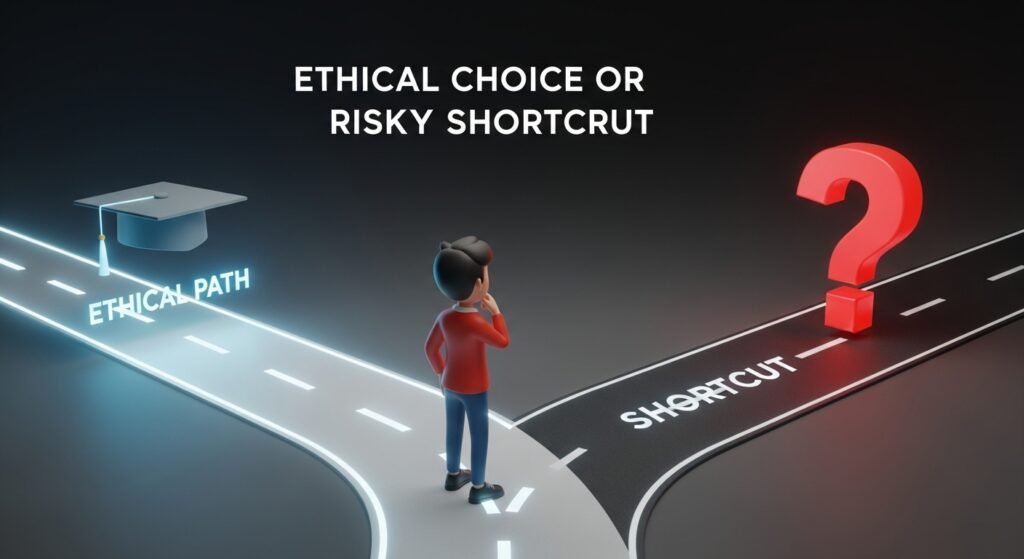
Frequently Asked Questions (FAQ)
The short answer is: increasingly, yes. AI detection tools are getting more sophisticated every day, and many institutions have integrated them into platforms like Turnitin. More importantly, experienced professors can often sense when writing lacks a genuine human voice or a consistent intellectual style. The best policy isn’t to try to evade detection; it’s to be transparent in your process.
It’s about retrieval versus creation. Google retrieves existing information from a vast index of web pages. You still have to read, synthesize, and create your own arguments. Generative AI creates new content based on its training data. It can do the synthesizing and writing for you, which is the part of the process where most learning happens. That’s the critical difference.
Citation styles are still evolving. Both MLA and APA have official guidelines. Generally, you need to describe what prompt you used and name the AI model (e.g., ChatGPT-4, Gemini). Always check the latest edition of the style guide your instructor requires. If none is specified, a simple footnote explaining how you used it is a great practice.
Absolutely! This is one of the best and most widely accepted ethical uses of AI. Using it as a creative partner to bounce ideas off of, explore different angles, and structure your thoughts is a smart way to work and is not considered cheating by most academic standards.
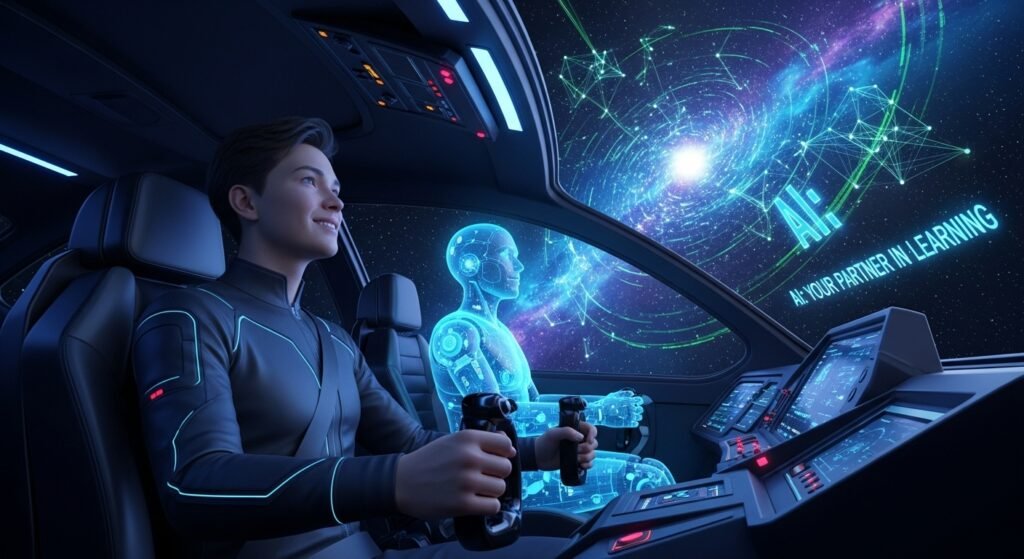
The Key Takeaway: Your Future Co-Pilot
So, here’s the bottom line. AI is not your replacement. It’s your co-pilot. A great pilot still knows how to fly the plane, read the weather, and make critical decisions. They use the autopilot to handle the routine tasks so they can focus on the bigger picture.
That’s how you should approach AI. Use it to automate the tedious parts of your work so you can dedicate more of your brainpower to what truly matters: critical thinking, creative analysis, and genuine learning. If you can master that partnership now, you won’t just be a better student—you’ll be leagues ahead in your future career.
Now I want to hear from you. What’s the most creative or helpful way you’ve used AI to assist your learning? Share your ideas and questions in the comments below!

